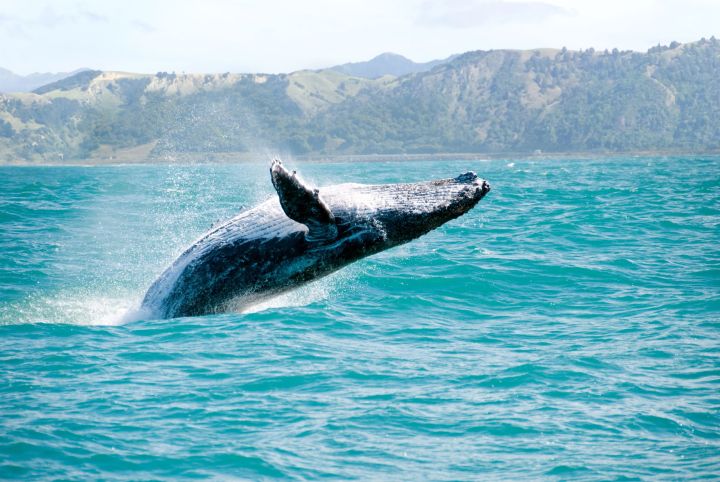
The whale mapping technique is called Passive Ocean Acoustic Waveguide Remote Sensing (POAWRS). Purnima Ratilal was studying military sonar when she discovered that while fish got in the way of enemy sub detection, the tech would allow for specific mapping of marine mammals. In 2006, Ratilal employed her new technique with two ships in the Gulf of Maine. One ship emitted sound waves, and the other was equipped with a string of 160 hydrophones to detect the echoes rebounding off 250 million herring. While studying the huge school of herring, Ratilal and her team discovered that their recordings were also picking up whale calls.
Since each species of whale sings within a distinct frequency range, the research team was able to identify which whale species was feeding in each area of the herring school. The recordings allowed Ratilal to distinguish the specific locations of eight different species of whale: blue, fin, humpback, sei, minke, sperm, pilot, and killer. Each species remained in a separated area of the feeding frenzy, but there is still no definitive science to explain why whales stick to their own turf.
Lead researcher Purnima Ratilal says that the passive element of her system is its most distinguishing feature. “Ours is the only technique that can instantaneously monitor marine mammal and fish populations over very large areas”, Ratilal told The Atlantic. Sound waves and reverberating echoes allow the field team to locate fish, but whales are so loud that all the researchers have to do is listen. In the future, Ratilal hopes to be able to use whale call recordings and geo-locating data from the POAWRS system to track mating season, feeding times, and other behaviors specific to each whale species.


